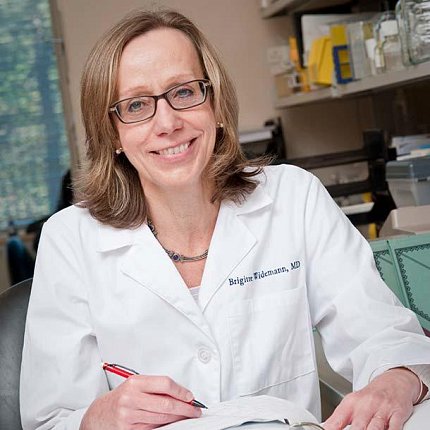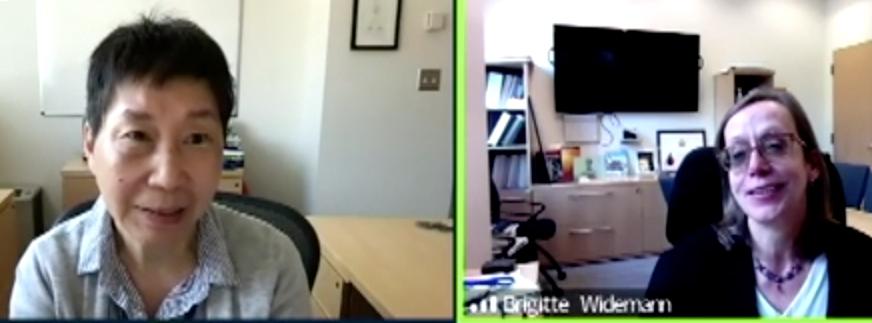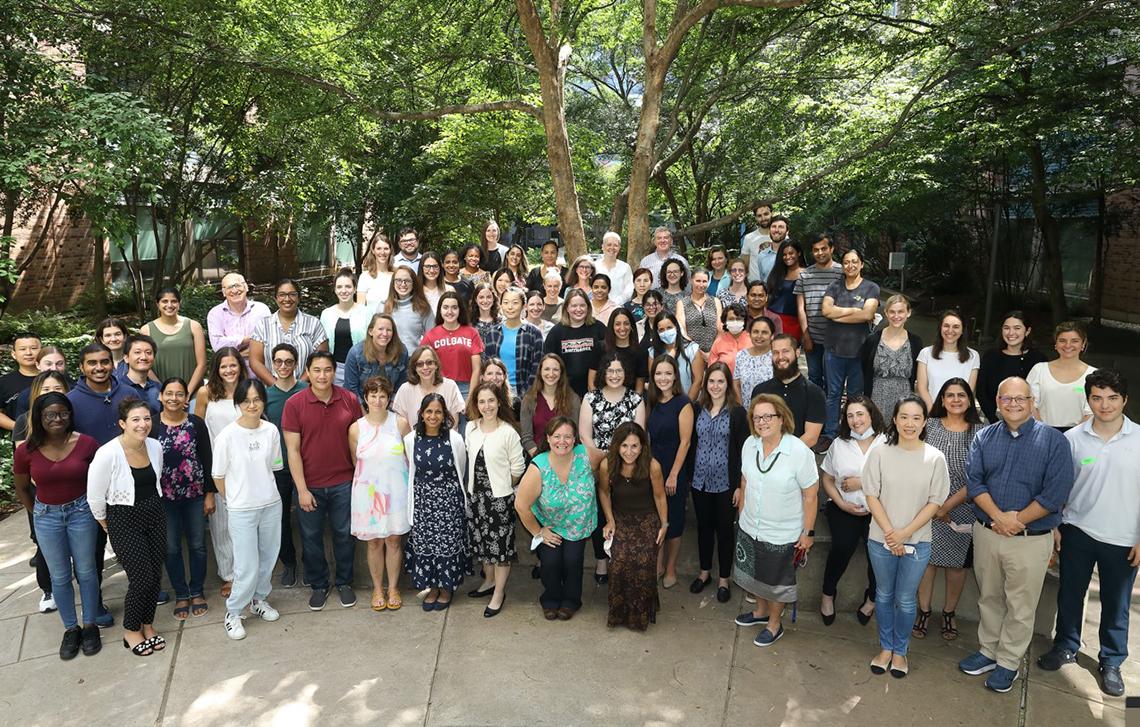Distinguished Scientist
NCI’s Widemann Discusses NF1 Therapeutics

Dr. Brigitte Widemann of the National Cancer Institute was honored as 2022’s featured speaker at the annual Anita B. Roberts Lecture Series—“Distinguished Women Scientists at NIH,” hosted by the women scientists advisory committee. Roberts was an eminent scientist who spent 30 years at NCI and rose to chief of the Laboratory of Cell Regulation and Carcinogenesis. She was the third most-cited female scientist in the world and was one of the top 50 most-cited scientists in the world from 1982 to 2002.
Roberts’s legacy as a scientist and mentor lives on in the lecture series. Widemann “exemplifies many of the same qualities that made Anita Roberts such a beloved scientist and mentor,” said Dr. Rebecca Voglewede, a representative of the NIH fellows committee, introducing the speaker.
Widemann is chief of the Pediatric Oncology Branch and is also co-leader of MyPART (My Pediatric and Adult Rare Tumor Network), which is funded by the Cancer Moonshot Initiative.
In her lecture, “Advancing the Development of Effective Therapies for Children and Adults with Rare Tumors,” Widemann discussed her breakthrough development of the first FDA-approved medical treatment for neurofibromatosis type 1 (NF1), a genetic disorder that causes multiple manifestations including inoperable tumors.
Widemann earned her M.D. from Cologne University in Germany and completed her pediatric residency at the University Children’s Hospital in Cologne. She then joined NCI as a pediatric and hematologic oncology fellow and has remained at NCI ever since. She has earned many awards and accolades in her career, and is building her own legacy as a mentor for the next generation of scientists.
Widemann’s Work
All pediatric cancers are considered rare—about 17,000 new cases every year for ages 0-19 years old, versus about 2 million new cases per year in adults—and researchers have drastically reduced the mortality rate of such cancers over the years. Widemann attributes this success largely to national and international collaborations in clinical trials.

The condition Widemann studies, NF1, is the most common single gene disorder in the nervous system, affecting 1 in every 3,500 people. Her research focuses specifically on plexiform neurofibromas, which are benign tumors that can develop anywhere in the body along peripheral nerves. The tumors typically occur in very young patients, can cause many problems such as pain and sometimes transform into a rare, malignant form of neurofibroma called malignant peripheral nerve sheath tumor (MPNST).
At the time Widemann began her research, there were no therapies available for plexiform neurofibromas. She essentially built her own data set by conducting a natural history study of people with NF1. In the initial study, she looked at how the tumors grow and used that knowledge to inform her clinical trial guidelines.
Some colleagues thought Widemann’s study was “boring,” but ultimately, “this study taught us more than several of the clinical trials I have conducted,” she said.
Breakthrough
After the natural history study and several treatment trials, which did not benefit the patients, she progressed to a phase 1 clinical trial of selumetinib. This drug is a MEK inhibitor that had not worked in clinical trials as a treatment for several adult cancers including breast cancer.
Selumetinib shrank tumors in almost all the children enrolled in the study (who had inoperable plexiform neurofibromas). Widemann confirmed the drug dosage in a dose-finding study, and then compared the drug results with the original natural history study to determine how selumetinib affects the growth of plexiform neurofibromas.
Children who were treated with selumetinib had a decrease in tumor volume sustained over several years. Conversely, children of the same age who were enrolled in Widemann’s first natural history study (who did not receive selumetinib), generally experienced an increase in tumor volume over the same time period.

Widemann and her team and collaborators took her data to the FDA and, 30 years after the NF1 gene was discovered, the results of the selumetinib and natural history studies resulted in the first FDA-approved drug for pediatric NF1. The drug also has been approved for use in numerous other countries. Another NCI study of selumetinib evaluated the drug in adult NF1 patients and also saw a significant reduction in tumor size.
“It’s a marathon, not a sprint,” Widemann said of the long but rewarding process.
Selumetinib is not a foolproof solution, however. When patients stop taking the drug, their tumors can begin to grow again.
How can we maximize patient benefit while they’re taking the drug? Widemann asked. She and another researcher in her team, Dr. Andrea Gross, will soon begin studying this question in very young patients. They want to know if administering selumetinib very early in life—starting daily and then transitioning to intermittent dosing—can prevent disfigurement when tumors grow in “critical areas” (such as the face).
Next Target
The aggressive form of neurofibroma, MPNST, still unfortunately does not have any good treatment options other than complete surgical resection (removal), which is often not feasible.
Selumetinib is not effective against MPNST, Widemann said, briefly discussing a study by Dr. Karen Cichowski that is looking at a combination of three different drugs and showing promising results against the rare tumor type.
Researchers are, however, making progress in preventing development of MPNST, Widemann noted. Atypical neurofibroma of uncertain biologic potential is a recently identified class of neurofibroma that seems to be a precursor for MPNST. Surgical resection of these atypical neurofibromas may be a way to prevent development of MPNST. And cell-free DNA blood tests may be able to test for evidence of MPNST. Widemann and colleagues are also beginning a new natural history study involving patients at high risk for MPNST.
MyPART & Partnerships
Widemann also talked about MyPART, which focuses on rare solid tumors affecting children, teens and adults under age 39.
She discussed several ongoing trials for chordoma and alveolar soft part sarcoma, and efforts by MYPART, NIH Clinical Center collaborators, advocacy partners and experts outside of the NIH called “NIH rare tumor clinics.” These clinics have helped advance knowledge about several rare cancers. Partnerships between consortia, community hospitals, advocacy groups and national experts will be critical for accelerating progress in rare tumor research and treatment, she emphasized.
“It takes a community to solve cancer,” agreed Dr. Doris Wu, senior investigator at the National Institute on Deafness and Other Communication Disorders, who moderated the lecture.
To view a recording of the full lecture, visit https://videocast.nih.gov/watch=45832.
